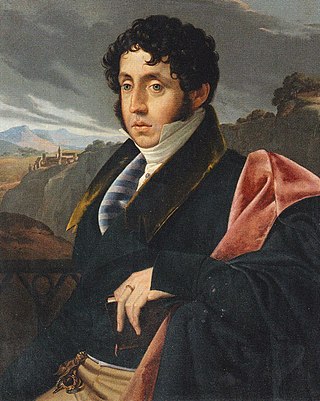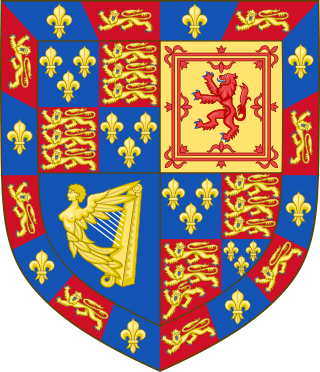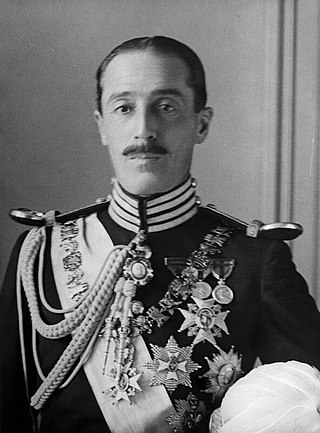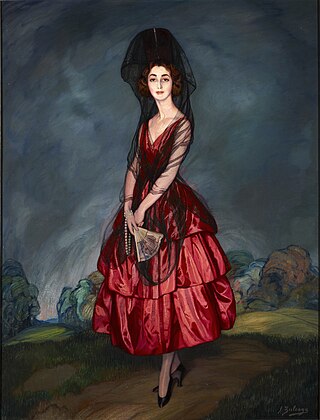History
Built around 1770 to a design by the architect Ventura Rodríguez, it was commissioned by James Fitz-James Stuart, 3rd Duke of Berwick, who was also the 3rd Duke of Liria (hence the name of the palace). In the early 19th century it passed to the inheritance of the House of Alba. On 19 March 1833, a fire broke out at Liria Palace, destroying part of its archive. [1] [2] Eugénie de Montijo, last empress consort of the French, died here in exile in 1920.
All but the facades were destroyed during the Spanish Civil War. [3] It was subsequently rebuilt by Jacobo Fitz-James Stuart, 17th Duke of Alba and his daughter Cayetana Fitz-James Stuart, 18th Duchess of Alba who was head of the House of Alba from 1955 to 2014. The British architect Edwin Lutyens had been commissioned by the 17th Duke to provide designs for the interior, and the reconstruction, although it took place after the architect's death, made use of them. [4]
Although the 18th Duchess of Alba's official residence was the Liria Palace, in later life she preferred the Palacio de las Dueñas in Seville, where she died. Her son and heir Carlos Fitz-James Stuart, 19th Duke of Alba resides at the Liria Palace. [3]

Sir Edwin Landseer Lutyens was an English architect known for imaginatively adapting traditional architectural styles to the requirements of his era. He designed many English country houses, war memorials and public buildings. In his biography, the writer Christopher Hussey wrote, "In his lifetime (Lutyens) was widely held to be our greatest architect since Wren if not, as many maintained, his superior". The architectural historian Gavin Stamp described him as "surely the greatest British architect of the twentieth century".

Neoclassical architecture, sometimes referred to as Classical Revival architecture, is an architectural style produced by the Neoclassical movement that began in the mid-18th century in Italy and France. It became one of the most prominent architectural styles in the Western world. The prevailing styles of architecture in most of Europe for the previous two centuries, Renaissance architecture and Baroque architecture, already represented partial revivals of the Classical architecture of ancient Rome and ancient Greek architecture, but the Neoclassical movement aimed to strip away the excesses of Late Baroque and return to a purer and more authentic classical style, adapted to modern purposes.

The House of Alba de Tormes, commonly known as the House of Alba, is a prominent Spanish noble family that descended from 12th-century nobility of post-conquest Toledo. The family's claim to Alba de Tormes dates from 1429, when Gutierre Álvarez de Toledo became Lord of Alba de Tormes while serving as Bishop of Palencia.

Duke of Alba de Tormes, commonly known as Duke of Alba, is a title of Spanish nobility that is accompanied by the dignity of Grandee of Spain. In 1472, the title of Count of Alba de Tormes, inherited by García Álvarez de Toledo, was elevated to the title of Duke of Alba de Tormes by King Henry IV of Castile.

María del Rosario Cayetana Fitz-James Stuart y Silva, 18th Duchess of Alba GE was one of the most senior aristocrats in Spain, as well as the most titled aristocrat in the world, a record now held by Princess Victoria of Hohenlohe-Langenburg, 20th Duchess of Medinaceli.

Carlos Miguel Fitz-James Stuart y Silva, 14th Duke of Alba, GE was a Spanish aristocrat.

Jacobo Francisco Eduardo Fitz-James Stuart y Colón de Portugal, 3rd Duke of Berwick, 3rd Duke of Liria and Jérica, 9th Duke of Veragua, 9th Duke of la Vega was a Spanish Jacobite. On the death of his father, James Fitz-James Stuart, in 1738, he inherited his titles of Duke of Berwick and Duke of Liria and Xerica. His mother was Spanish, and on her side he was a direct descendant of explorer Christopher Columbus.

Don Carlos Bernardo Fitz-James Stuart y Silva, 4th Duke of Liria and Jérica, 4th Duke of Berwick was a Spanish nobleman. Born in Liria, Spain, he was the son of James (Jacobo) Fitz-James Stuart, 3rd Duke of Berwick, and his wife, María Teresa de Silva y Álvarez de Toledo.

The House of FitzJamesStuart, or simply FitzJames, is a noble house founded by James FitzJames, 1st Duke of Berwick. He was the illegitimate son of James II & VII, King of England, Scotland and Ireland, a monarch of the House of Stuart. After the Revolution of 1688, the 1st Duke of Berwick followed his father into exile and much of the family's history since then has been in Spain and France, with several members of the family serving in a military capacity.

Jacobo Fitz-James Stuart y Falcó, 17th Duke of Alba, 10th Duke of Berwick, GE was a Spanish peer, diplomat, politician, art collector and Olympic medalist. A Jacobite, he was the most senior surviving male-line descendant of James II, and despite having never made a claim, he was considered by some as the legitimate heir to the throne of Scotland. He was one of the most important aristocrats of his time and held, among other titles, the dukedoms of Alba de Tormes and Berwick, the Countship of Lemos, Lerín, Montijo and the Marquessate of Carpio. He was granted the Order of the Golden Fleece of Spain in 1926.

Doña María del Rosario de Silva y Gurtubay, Duchess of Alba de Tormes, 9th Marchioness of San Vicente del Barco, GE was a Spanish aristocrat and socialite. Single heiress of all the titles of her father, Alfonso de Silva, 16th Duke of Híjar, and of the fortune of her mother, María del Rosario Gurtubay, the young Marchioness was one of the beauties of her time.

María Eugenia Martínez de Irujo y Fitz-James Stuart, 12th Duchess of Montoro, GE is a Spanish aristocrat and socialite. Born in Madrid, she is the youngest and only daughter of Luis Martínez de Irujo y Artázcoz and Cayetana Fitz-James Stuart, 18th Duchess of Alba. The Duchess works in public relations for Tous Designer House. Her official seat of residence is at Liria Palace in Madrid, but she also spends time at her property La Pizana in Gerena, in the province of Sevilla.

Carlos Fitz-James Stuart y Martínez de Irujo, 19th Duke of Alba, GE, is a Spanish aristocrat. He is the head of the House of Alba, one of the most prominent families of the Spanish nobility.

Jacobo Fitz-James Stuart y Ventimiglia, 15th Duke of Alba, GE was a Spanish nobleman. He was a brother-in-law of Napoleon III through his wife, sister of Empress Eugenie.

Palacio de las Dueñas is a palace in Seville, Spain, currently belonging to the House of Alba. It was built in the late 15th century in the Renaissance style with Gothic and Moorish influences. The palace is one of the major historic homes of great architectural and artistic heritage in the city. The poet Antonio Machado was born here, as were Carlos Falcó, 5th Marquess of Griñón and the Marquess of Castel-Moncayo. On October 5, 2011 Cayetana Fitz-James Stuart, 18th Duchess of Alba married her third husband here. The palace became a national monument on June 3, 1931.

Carlos María Fitz-James Stuart y Palafox, 16th Duke of Alba, 9th Duke of Berwick GE was a Spanish nobleman and diplomat, who held, amongst others, the Dukedom of Alba and Berwick.
Jesús Aguirre y Ortiz de Zárate, Duke consort of Alba was a Spanish intellectual, Jesuit priest, literary editor, and aristocrat. After leaving the priesthood, he became the literary editorial director of Taurus Publishing and later held the position of Director General of Music in the Spanish Ministry of Culture from 1977 to 1980. He was married to Cayetana Fitz-James Stuart, 18th Duchess of Alba and head of the House of Alba. In 1986, he went on to occupy Chair "F" of the Royal Spanish Academy, replacing Manuel de Terán Álvarez.
Fernando Juan Fitz-James Stuart y de Solís, 17th Duke of Huéscar, GE, is a Spanish aristocrat. He is the current Duke of Huéscar, and heir apparent to the dukedom of Alba and thereby to the headship of the House of Alba.

María Francisca de Sales "Paca" de Palafox Portocarrero y Kirkpatrick, 16th Duchess of Peñaranda de Duero, also known as Paca de Alba, was a Spanish noblewoman and the sister of Eugénie de Montijo, Empress of the French. She was the 16th Duchess of Peñaranda de Duero in her own right and a Grandee of Spain, and she inherited many other titles from her father. She was also Duchess of Alba by virtue of her marriage to Jacobo Fitz-James Stuart, 15th Duke of Alba.



















